TCL had a significant presence at IFA this year. It kicked off its presence with a ‘global’ press event that started with the inevitable noisy corporate video.
TCL claims to be the #3 TV maker globally, now, with 13,173,307 sets sold in the first half of 2018, and is close to LG, so it hopes to get to the #2 position by the end of this year. Senior VP and CEO of TCL Electronics, Kevin Wang came on stage.
 Kevin Wang is CEO of TCL Electronics
Kevin Wang is CEO of TCL Electronics
Wang introduced the new products. TCL has developed very fast over 37 years and is now truly global and is in 160 markets, with 49% of income coming now from outside China. The company has recently started to expand its European TV sales into the UK. The TV business has grown 37% globally in the last year, and 44% overseas. In the US, TCL is growing rapidly with 27% growth this year according to NPD. France, Spain and Poland have also seen strong growth and Latam has grown 47%, with Brazil growing dramatically.
Wang said that its vertical integration from panel supply onwards (via CSOT) has been key to this growth. CSOT has been making panels for five years and currently has two G8.5 fabs, with a G11 under construction. The firm has also tried to widely promote its brand through sponsorships and partners.
QD technology is a key for TCL and Wang said that big screen TVs are coming. The new P7 production line will boost capacity for 65″ and 75″. The company plans to use the TV as the home centre to develop its smart home offerings. To reflect the change to Smart Home, audio and commercial displays, the company has changed its name from TCL Multimedia to TCL Electronics.
The next speaker was Thiago Abreu who is the main designer for TCL TVs and who is based, now, in China, although he is originally from Portugal. He explained the ‘Living Window’ TV design concept that the company is developing and that is designed to be truly artistic and really emotionally connect to the viewer.
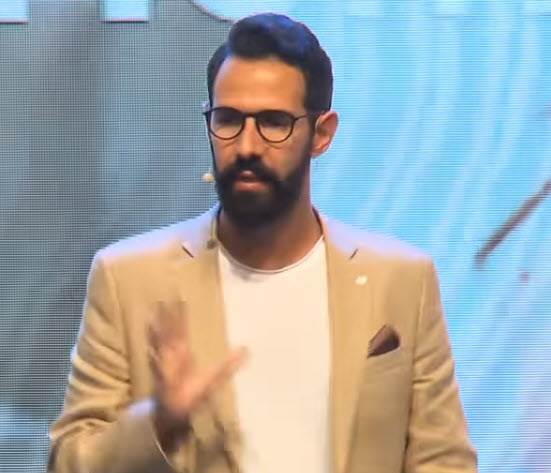 TCL’s TV designer is Thiago Abreu who is based in China.
TCL’s TV designer is Thiago Abreu who is based in China.
There are four design concepts – the first being the Art Deco style which combines modern design with rich materials. The speaker fabric is designed to work with the brass-coloured frame.
The Abstract Beauty Living Window is a tribute to cubism and is slightly asymmetrical and the design is designed around the visual rules of cubism. The blue colour is a nod to Picasso.
The Modern Simplicity model is intended to show order, simplicity and beauty and is symmetrical to show balance. The colour for the speakers is a ‘Moonlight Blue’.
The fourth design is the Oriental Elegance Living Window which pays homage to the artistic culture of Asia and reflects folding screens and fans.
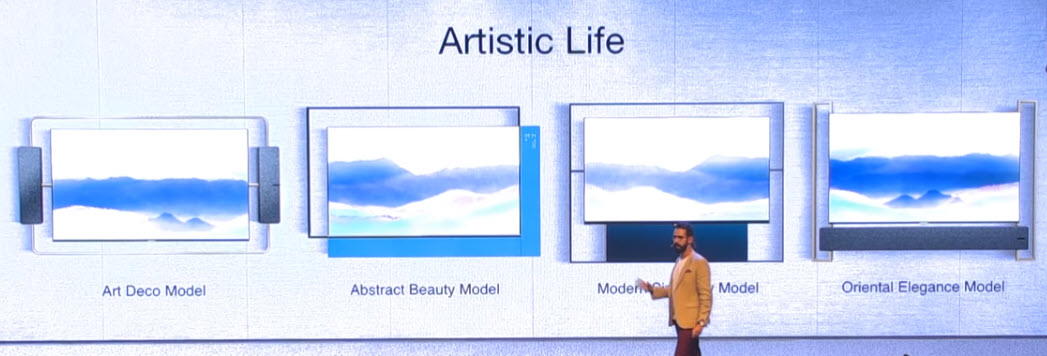 TCL’s four Living Window designs
TCL’s four Living Window designs
The aim is to get more functions, so the firm’s Home Gallery app allows access to artworks and can provide information about artworks, using voice control. It’s easy to send content from smartphones to the set and there is also a ‘Concert Hall’ function. Life Butler is to help develop smart home functions.
TCL has new low reflection screens which help improve the image of artworks shown, as well as exploiting the better colour of QD technology. Abreu said that even if audio is running, the voice control system can respond to user commands.
There was then discussion of the FIBA Basketball sponsorship. Abreu then came back on to talk about 8K and started by saying that it makes big demands on the technology. Again, he highlighted QDs and local dimming. The company’s 8K FIBA QD flagship set will be supplied with an upward firing Dolby Atmos sound bar, developed with Onkyo.
The X8 is the firm’s latest 4K TV and it also has the Cityline C7 UHD sets which have audio developed by Harman Kardon and with Dolby Atmos support.
GM of Sales & Marketing in Europe is Frederic Langen who started with one word from soccer star, Neymar (the firm’s global brand ambassador) followed by a summary of developments in the European market.
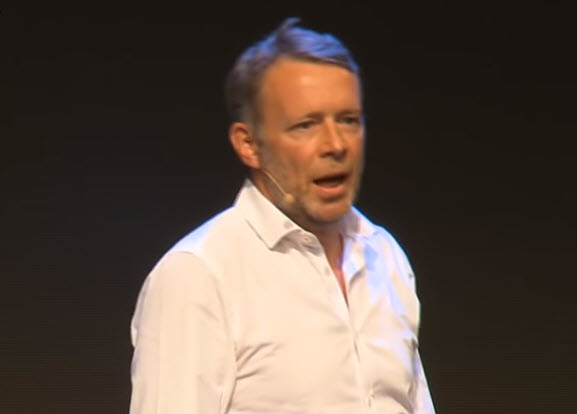 TCL’s Frederic Langen is head of Sales and Marketing in Europe
TCL’s Frederic Langen is head of Sales and Marketing in Europe
Langen went through the events for TCL over the last year including a Global Press event in April and the UK launch in June. The company has also expanded into Greece, Romania and the Balkans, so it is active now in 25 countries and sales have increased by 73% in volume in the first half. Sell out in Germany is almost double, although the market has dropped by 6%. The company now has deals in Germany with MediaMarkt, Amazon, Saturn and Otto. It has in-store branding with MediaMarkt.
France remains the biggest market, and the company is already third in share. The UK launch is in an early stage but feedback has been good so far. The ambition for the brand is to be in the top three in three major markets by the end of 2019 and third overall by the end of 2020. The company is expanding into three new markets, the Netherlands, Austria and Switzerland and more may be added. The aim is to add another 1,000 online and offline stores by the end of the year.
TCL has tried to understand the needs of European customers and is working hard to meet the needs of different groups. One group is ‘family protectors’ that want great sound, ease of use, the latest technology and streaming video support as well as smart technologies and attractive design.
The C76 line has everything for this group including AI features and combines elegance and performance and supports Google Assistant (via Android TV 8.0). It has an integrated tubular JBL soundbar with four front-firing speakers, HDR Pro and UltraHD resolution. The design is just 7.9mm thick – thinner than many smartphones. The firm has an EISA award for the 55″ set as ‘best buy LCD TV’.
Booth Tour
We met with Langen and Abreu on the booth, as well as with technical staff. In the US, TCL was an early adopter of the Roku OS for TVs, but this is not available in Europe, so up to now it has used Linux, although Android is starting to come in, although not yet in the UK (we heard from a number of vendors that the lack of support for Freeview Play, considered essential by many retailers, in Android TV is a big barrier to Android in the UK).
Those that have been in the European market for TV will know that TCL also controls the Thomson brand (after the demise of the ill-fated TTE venture). The Thomson brand continues to do well in traditional markets such as France (of course) as well as Italy and Spain. Germany has been successful since TCL entered last year and sales there have doubled each year.
Turning to technical issues, at the show, the company had a prototype set using the QDOG QD on Glass concept and using a Corning glass LGP. The aim is to eventually release products using this technology in the European market, where there are consumers that look for high design values.
 This prototype uses QDOG technology. Image:Meko
This prototype uses QDOG technology. Image:Meko
 The QDOG display is very slim. Image:Meko
The QDOG display is very slim. Image:Meko
As well as supporting QDs for the widest colour gamuts at the top of the range, the company is also using RG phosphor to enable WCG on sets further down the range, although entry level sets use LEDs with YAG phosphor.
TCL is strongly supportive of Dolby Vision and doesn’t expect HDR10+ to be significant. A key point for the firm is that it believes that Netflix requires Dolby Vision content from content creators, so if you have to support DV for Netflix, you can derive HDR10+ from these masters. The firm has a SmatHDR process that can both map SDR to HDR to improve the viewer experience, but can also map between different HDR content.
TCL’s TVs allow access to calibration adjustments to enable consumers to get their sets professionally set up in SDR and in HDR. We were told that in the firm’s best sets, the Delta E error can be less than 1, for very accurate colour and one demonstration of an HDR display had 4,000 cd/m2 of peak brightness and a delta E less than 0.5, contrast of 20,000:1 (black level of 0.005 cd/m2) and full DCI-P3 colour support.
 The HDR master has 4,000 cd/m² peak output. Image:Meko
The HDR master has 4,000 cd/m² peak output. Image:Meko
FALD is a topic that is being developed using miniLEDs and there was a demo of a set with 2,000 or more zones that gave high contrast with little flaring. 8K is a topic for next year in Europe as the company wants to be able to support higher frame rates and at the moment HDMI 2.1 chips are not yet available. The 8K set at the show had 700 backlight zones.
There was another demonstration of an HDR set that was claimed to use 280,000 mini LED backlights and with 200,000:1 contrast and 3,000 cd/m² of output. The miniLEDs were placed using mass transfer, but few other details were available.
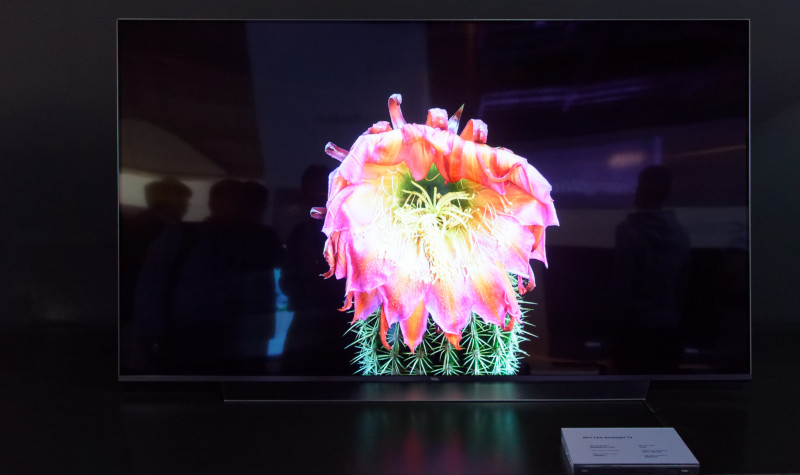 This HDR set is claimed to use 280K miniLEDs. Image:Meko
This HDR set is claimed to use 280K miniLEDs. Image:Meko
Looking at Smart operations, TCL is supporting both Amazon Alexa and Google Assistant and will be supported initially with near field microphones in remote controls. Later, far-field microphones will be supported. Android 8.0 is the current level that TCL is shipping and it is able to upgrade sets from Android 6.0 onward. It has a plan for Android TV 9 in 2019.
In sound, the Onkyo technology will arrive next year.
Designs
We looked at the new Living Window designs that were talked about in the press event, with Thiago Abreu. He confirmed to us that these are real products that are being sold in China, but at the moment are not yet available in Europe. Part of the reason for showing them at IFA was to get feedback from users and channels.
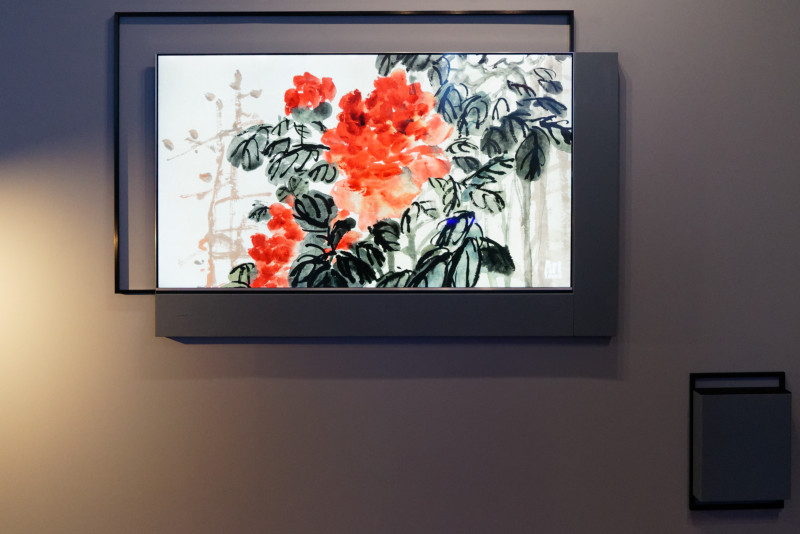 The box on the right is a sub-woofer. Image:Meko
The box on the right is a sub-woofer. Image:Meko

